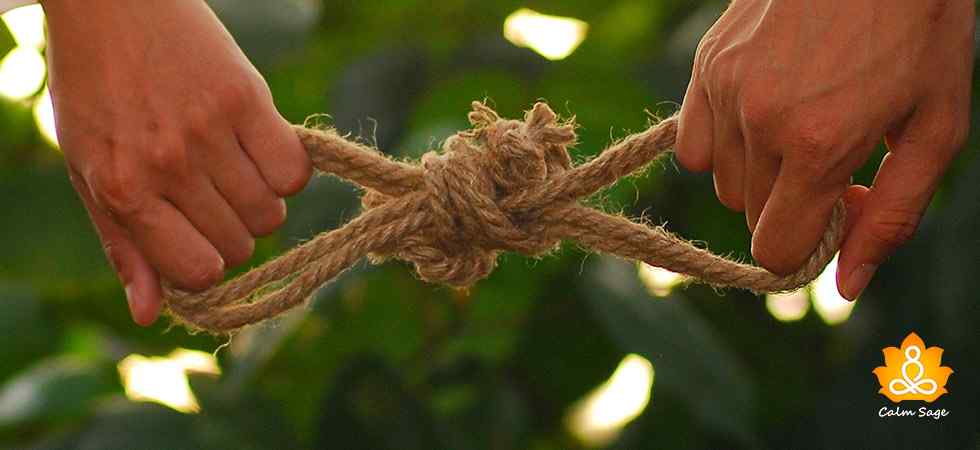The Most Common Power Dynamics In Relationships (And How To Resolve Them)

When we think of relationships, we think of an equal partnership, right? Well, if we’re not careful then there could be an imbalance in the power dynamics of the relationship. We don’t pay attention to how much power dynamics play into the relationship.
Now, when I say power dynamics, I’m not talking about one partner being the dominant and the other one just following their lead. Power dynamics are about how the partners’ interactions can influence the relationship.
When there’s an imbalance in the power dynamics, then it could lead to resentment, arguments, and even an emotional distance that shouldn’t be there in a romantic relationship.
In every relationship – whether romantic or platonic – every person involved needs to feel equally seen and heard. If there’s an imbalance there, then it could topple the whole relationship, leaving behind a trail of problems.
According to relationship therapists, there could be an imbalance in the power dynamics especially when it comes to finances, intimacy, decision-making, and responsibilities. Three common power dynamics can be found in relationships.
Keep reading to know what these three power dynamics in relationships are and how you can resolve them.
Power Dynamics In Relationships

1.Demand – Withdrawal
In the Demand – Withdrawal power dynamic, one partner believes that their needs are unmet and that their demands are ignored. They believe that they are asking for something from another partner but can’t get through to them. This kind of behavior can often lead to frustration, resentment, and even shouting matches.
On the other hand, the “withdraw-er” is content to avoid the demands made by the “demander”. Some partners may feel that their partner is demanding too much from them, so they withdraw from them and avoid it as rebellion. Even small chores like washing dishes could turn into an argument.
To change this dynamic, all you have to do is open your communication and be respectful of one another. This kind of power dynamic can lead to mistrust so if you feel this is the power dynamic of your relationship, then try to be clear with your expectations, listen to your partner, and avoid doing things that might hurt your partner or yourself, by extension.
2.Distancer – Pursuer
This type of power dynamic appears in a relationship where one partner is too invested in the other partner and makes too many efforts. This “Distancer – Pursuer” dynamic can also indicate your attachment style, which is based on your early relationships (with your parents/caregivers). If you’ve received validation and support from your early relationships, then there’s better self-esteem. If there is a lack of validation, then it could result in avoidant or anxious attachment styles.
Your attachment style and love language can play a major role in how your power dynamics in relationships are formed. For example, if one partner’s love language is words of affirmation, then they are likely to send their partner 10 messages of affection in a day. However, if the other partner’s love language isn’t that and can’t identify with affection, then they may feel suffocated and eventually distance themselves from the relationship.
To resolve this power imbalance, you can try to step out of your comfort zone and take the first step for once. It could be awkward but will eventually help you create a healthy power dynamic in the relationship. Just keep the communication between the two of you open and honest.
3.Fear-Shame
The third most common power dynamic in relationships is the Fear-Shame one. This kind of power dynamic can touch one (or both) partners’ insecurities. If this happens, then the relationship can turn bitter and even aggressive.
More often than not, this kind of power dynamic stems from unresolved trauma in either of the partners’ lives.
To resolve this power dynamic, you need to learn how to trust and be vulnerable with your partner. Understanding your vulnerabilities and trusting that your partner will value them, could help. If this is your partner’s issue, then you need to learn to support your partner in their vulnerable moments.
Again, keeping honest and open communication is key. If you feel your insecurities rising, talk to your partner and voice your concerns with them. Trust them to support you and give you space to be vulnerable.
Here, if there’s unresolved trauma, then speaking to a mental health professional might be beneficial. They can help address the trauma in a safe setting and help you and your partner learn how to support one another emotionally.
Tips For Healthy Power Dynamics In Relationships

Healthy power dynamics in relationships are based on trust, vulnerability, and honest communication. Here are some tips to help you create a healthy power balance in the relationship, no matter your power dynamics;
- Open and honest communication is a must. Being honest with yourself and your partner can help you strengthen your relationship as well as increase the emotional intimacy in the relationship. Be ready and open to accepting different points of view.
- Respect each other’s boundaries. Listen and respect your partner’s boundaries and needs. If they have different interests than yours, then support them. Try to encourage them to pursue their own interests and passions.
- Argue but keep it fair. In a relationship, arguments and disagreements are always there, but during those times, make sure you keep everything fair and avoid blaming each other. If you need to calm yourself, then take a break, walk off your anger, and then try again.
- Seek help when you need it. If you’re having trouble maintaining healthy power dynamics in relationships, then try seeking couples counseling. Other things that can interfere with your power dynamics can include;
- Being stuck in the same arguments
- Being angry and resentful toward your partner
- A lack of sexual or physical intimacy
- Infidelity
What Next?
Power dynamics in relationships mean the different ways partners can act and influence each other’s behaviors. There are three common types of power dynamics in relationships; Demand – Withdrawal; Distancer – Pursuer; and Fear – Shame.
If you have any of these three power dynamics in your relationship, then there are some ways you can resolve them and create a healthy power balance.
If you need further help, you can always reach out to a professional couple’s counselor. I hope this article helped you understand power dynamics in relationships.
For more, you can write to us atinfo@calmsage.com or DM us on social media. You can also share your thoughts and tips with us in the comments section below.
Take Care!




















